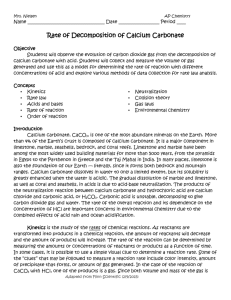
Some mixtures can be separated on the basis of the solubility rules. It involves adding a reagent that selectively brings one of the ions out of solution as a precipitate while it leaves the other ions in the solution. The technique known as selective precipitation combines these processes to separate a mixture of two or more ions. The concentration of an ion can be controlled to either prevent a solid from dissolving or to keep it in solution. Cr(OH) 3 would precipitate from any solution that momentarily contained the Cr 3+ and OH - ion concentrations that correspond to Point C. Point C describes a pair of Cr 3+ and OH - ion concentrations for which the ion product is too large. Point B corresponds to the set of conditions under which Cr(OH) 3 just starts to precipitate. Point A represents a solution in which the OH - ion concentration is too small for Cr(OH) 3 to precipitate when the Cr 3+ ion concentration is 0.10 M. The points along the solid line in the above figure represent combinations of Cr 3+ and OH - ion concentrations at which the solution is saturated, and therefore at equilibrium. The figure below shows a log-log plot of the data in the above table. Another way to overcome the problem involves plotting the Cr 3+ and OH - concentrations on log-log graph paper. The log term for the data in the table below ranges from 0 to -7, and the log term ranges from -7.7 to -10.1.

We can overcome this problem by plotting the log of the Cr 3+ ion concentrations versus the log of the OH - ion concentrations. Only a small fraction of these data will fit on a normal graph, such as the figure below. The Inverse Relationship Between the Equilibrium Concentrations of the Cr 3+ and OH - Ions The results of similar calculations for a number of different Cr 3+ ion concentrations are given in the table below. Let's use the results of this calculation to explain why it is impossible to prepare an 0.10 M Cr 3+ solution at neutral pH. Practice Problem 8:Ĭalculate the pH at which Cr(OH) 3 just starts to precipitate from an 0.10 M Cr 3+ solution. Instead of adding a source of a common ion, we add a reagent that removes the common ion from solution. The common-ion effect can also be used to prevent a salt from precipitating from solution. Thus, it isn't surprising that adding an acid to water decreases the concentration of the OH - ion in much the same way that adding another source of the Ag + ion to a saturated solution of AgCl decreases the concentration of the Cl - ion. We now have two sources of a common ion the H 3O + ion. Consider what happens when we add a generic acid ( HA) to water. The common ion effect can be applied to other equilibria, as well. These calculations show how the common-ion effect can be used to make an 'insoluble' salt even less soluble in water. Let's compare the results of the two above practice problems.

Practice Problem 7:Ĭalculate the solubility of AgCl in 0.10 M NaCl. Because the Cl - ion is one of the products of the solubility equilibrium, LeChatelier's principle leads us to expect that AgCl will be even less soluble in an 0.10 M Cl - solution than it is in pure water.

A 0.10 M NaCl solution therefore contains 0.10 moles of the Cl - ion per liter of solution. The common-ion effect can be understood by considering the following question: What happens to the solubility of AgCl when we dissolve this salt in a solution that is already 0.10 M NaCl? As a rule, we can assume that salts dissociate into their ions when they dissolve. Practice Problem 6:Ĭalculate the solubility of AgCl in pure water. This section focuses on the effect of common ions on solubility product equilibria. Solutions to which both NaCl and AgCl have been added also contain a common ion in this case, the Cl - ion. By definition, a common ion is an ion that enters the solution from two different sources.

When AgNO 3 is added to a saturated solution of AgCl, it is often described as a source of a common ion, the Ag + ion. Using Complex Ion Equilibria to Dissolve an Insoluble Salt
COMMON ION EFFECT ON SOLUBILITY POGIL HOW TO
How To Adjust the Concentration of an IonĬomplex Dissociation Equilibrium Constants How To Separate Ions by Selective Precipitation


 0 kommentar(er)
0 kommentar(er)
